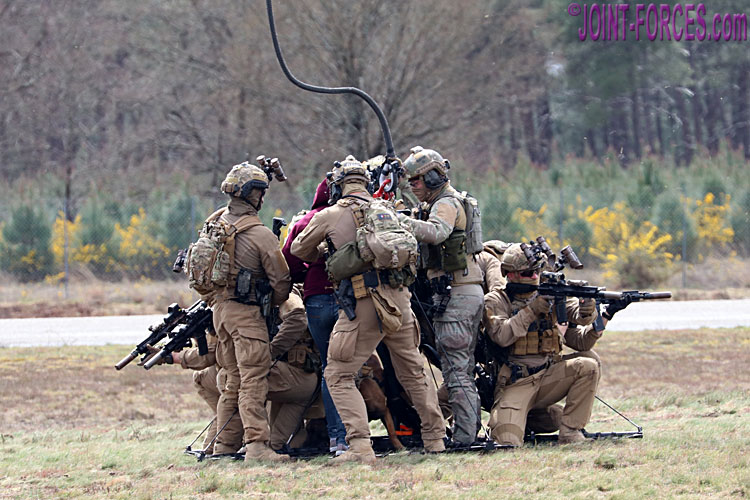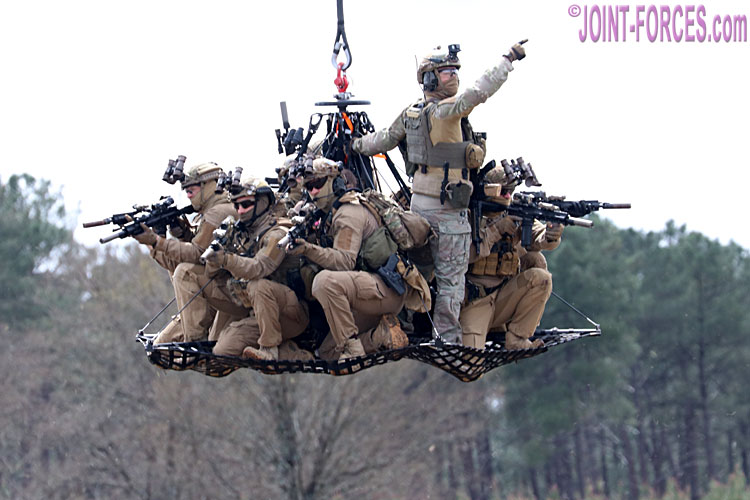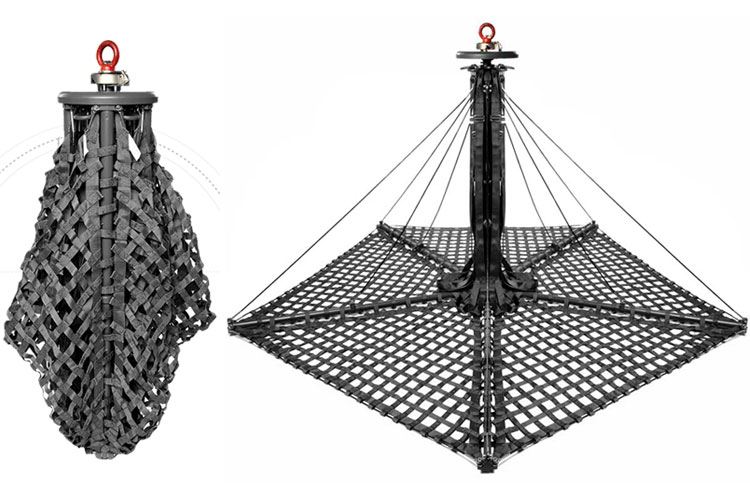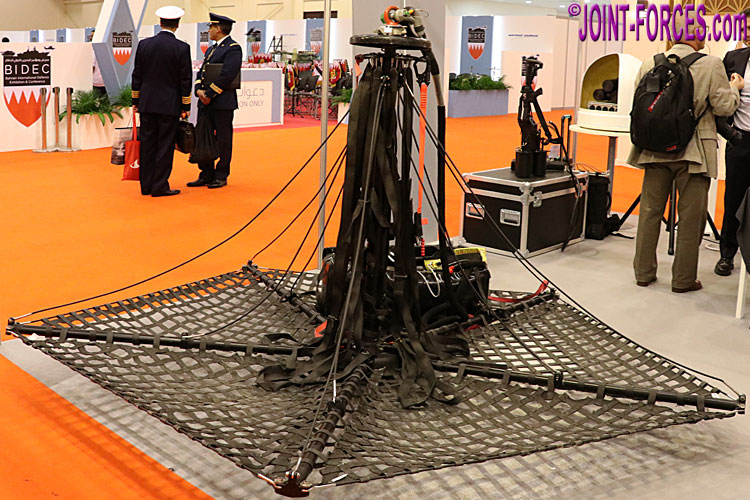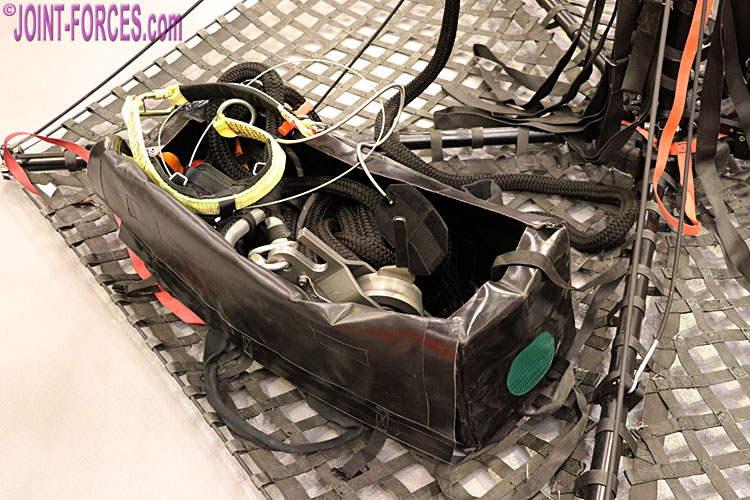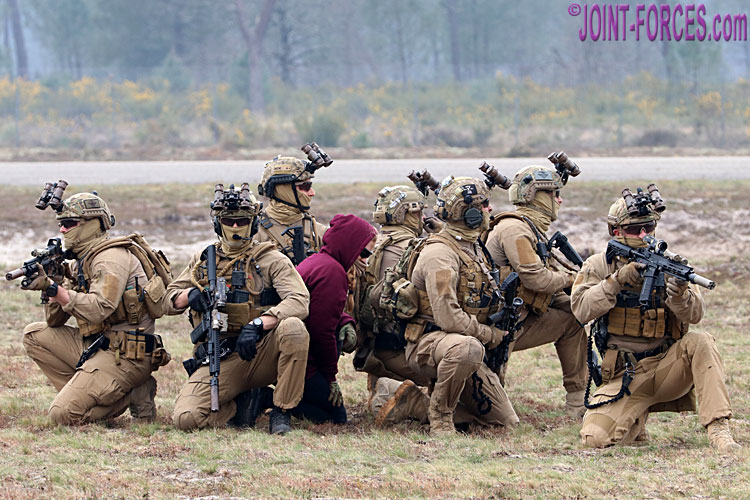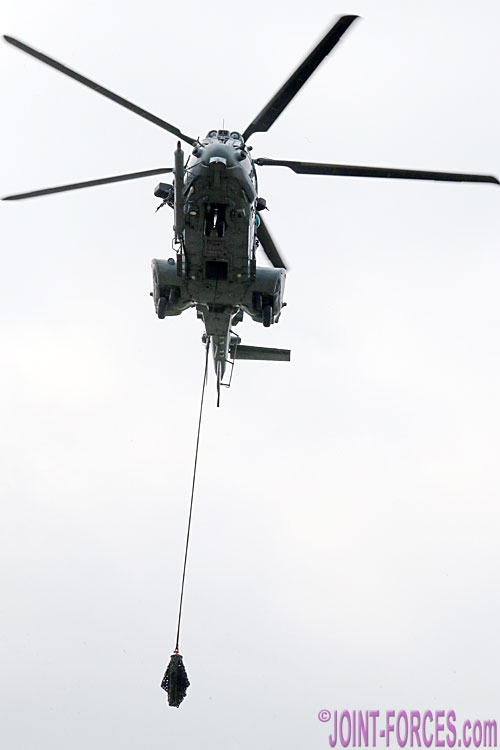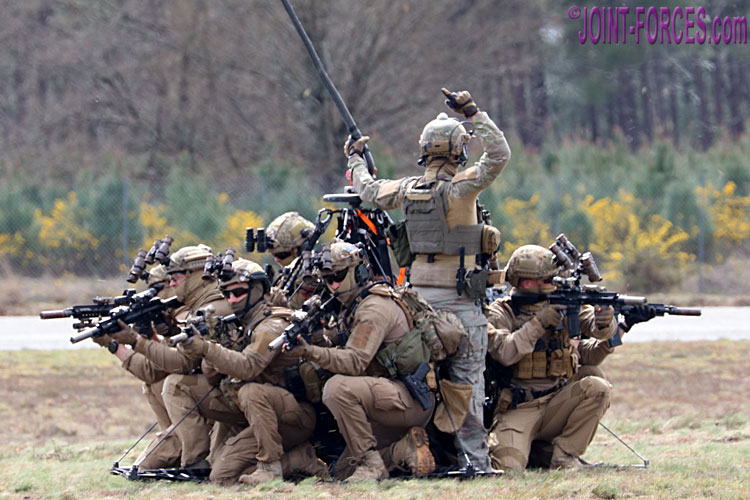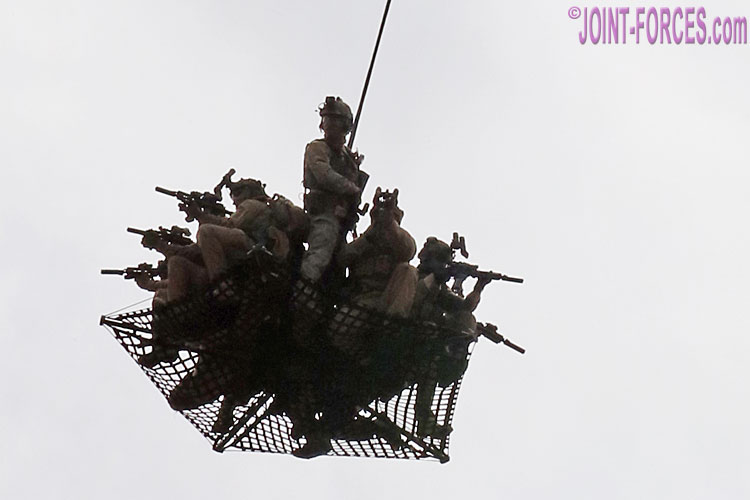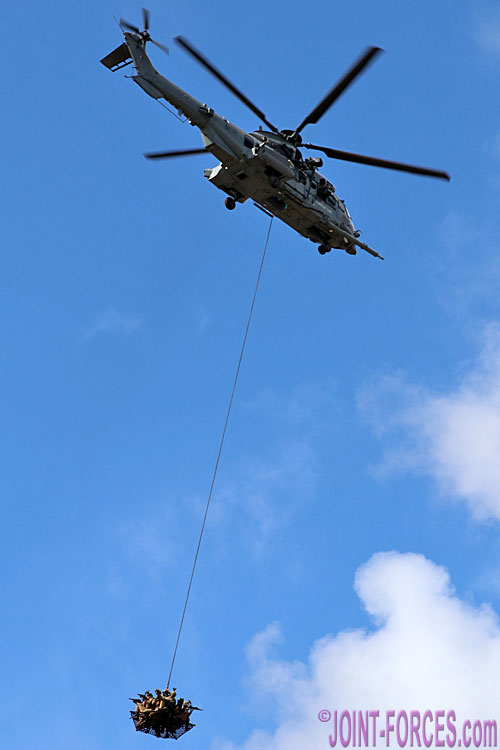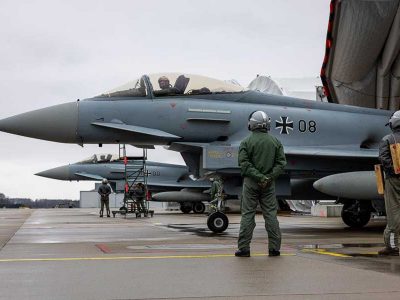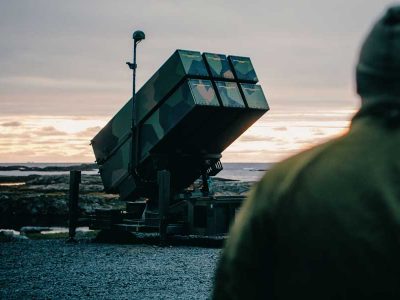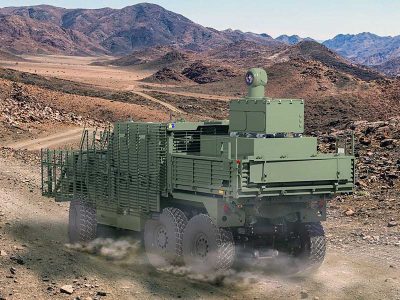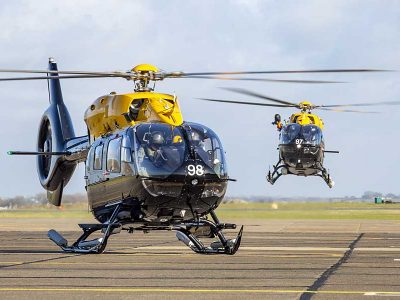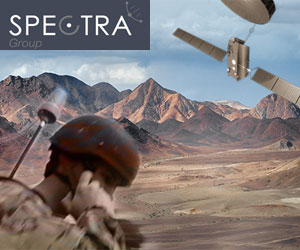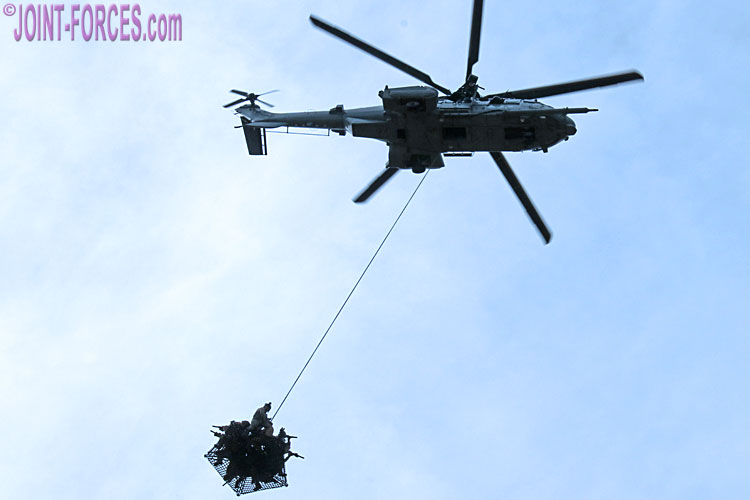
The AirTEP Airborne Tactical Extraction Platform is a means of extracting, or inserting, up to ten personnel underslung from a transport helicopter, writes Bob Morrison.
~
Favoured by Special Forces and Special Operations Forces around the globe, but also used by emergency services as means to allow speedy evacuation of civilians from burning high rise buildings or (as the SeaTEP variant) workers from oil rigs or sailors in distress, the AirTEP is a pentagon-shaped folding arm and net assembly arranged around a central column which hangs around 25 metres beneath a helicopter like an inverted umbrella.
AirTEP, unlike SPIES (Special Patrol Infiltration / Exfiltration System) which leaves extracted operators hanging like a bunch of grapes, not only allows rescued / untrained personnel to be easily transported but also facilitates up to a ten-man section to be recovered in a single lift. After stepping onto one of the unfolded platform’s nets, all the person being extracted (or in a rescue situation the operator responsible for their security) needs do is attach the clip on the safety strop from their belt or harness to docking rings under the collar directly beneath the red eyelet at the top of the AirTEP assembly and then wait to be whisked away.
For the technically minded, the complete AirTEP assembly weighs a little over 50kg and in folded configuration measures 1,500mm by 400mm diameter. When fully opened the unit has a diameter of 2,900mm and remains at 1,500mm tall. The system has been certified for use under most medium transport helicopter types used by NATO (e.g. EH-101, Mi-17, S-61, SA-330, UH-60 etc.) for a maximum 1,500kg human payload transported at up to 180km/hr or 100 knots. The platform can be used in wind conditions up to 50km/hr or 30 knots and its pentagonal configuration minimises in-flight gyration, making it easy to fly with as an underslung load and meaning operators can maintain defensive firing arcs during flight.
The accompanying images of French Special Forces (Forces Spéciales Françaises) using AirTEP were taken during the dynamic displays at the SOFINS Special Operations Forces expo and conference at Camp de Souge near Bordeaux in April 2019. The rescue team were from Navy Special Forces (Commandos Marine or Bérets Verts) and the helicopter was an EC 725 Caracal belonging to 4e RHFS (4e Régiment d’Hélicoptères des Forces Spéciales). The operator in charge of the recovery operation was wearing the new French Army Special Forces camo pattern uniform and was most likely also from 4e RHFS.
AirTEP is a French-designed system, first certified for airworthiness in 2006, primarily manufactured by Escape International of Paris but also manufactured under licence by Capewell Aerial Systems in the United States. The system is used by over twenty countries and although in many cases the manufacturers cannot disclose precisely who their military clients are it is a matter of public record that they include in Europe the Czech, Danish and French SF / SOF. In the Middle East the Bahrain Royal Guard, UAE Presidential Guard and Jordanian SpecOps have all used the AirTEP.
[images © Bob Morrison unless otherwise noted]
